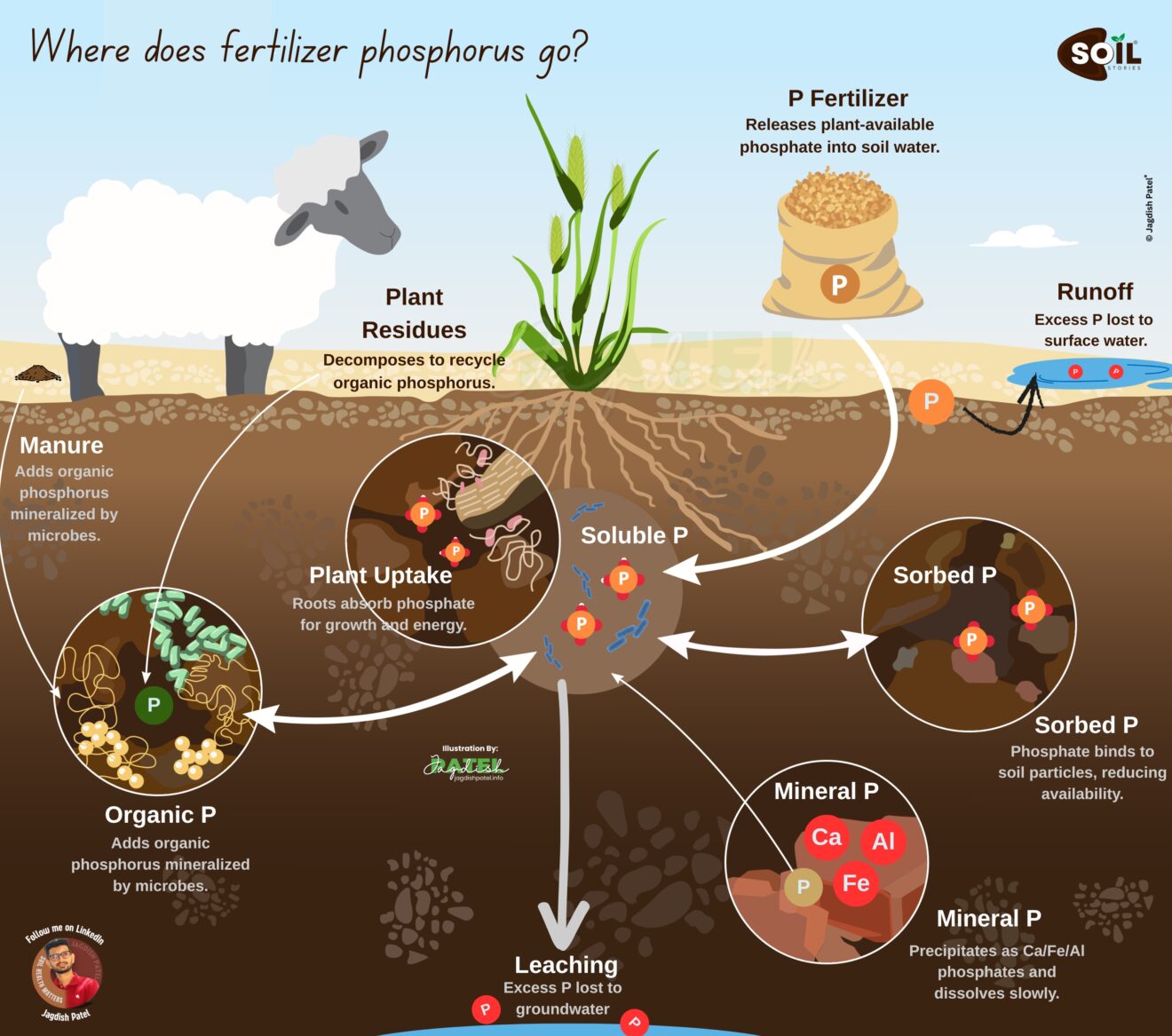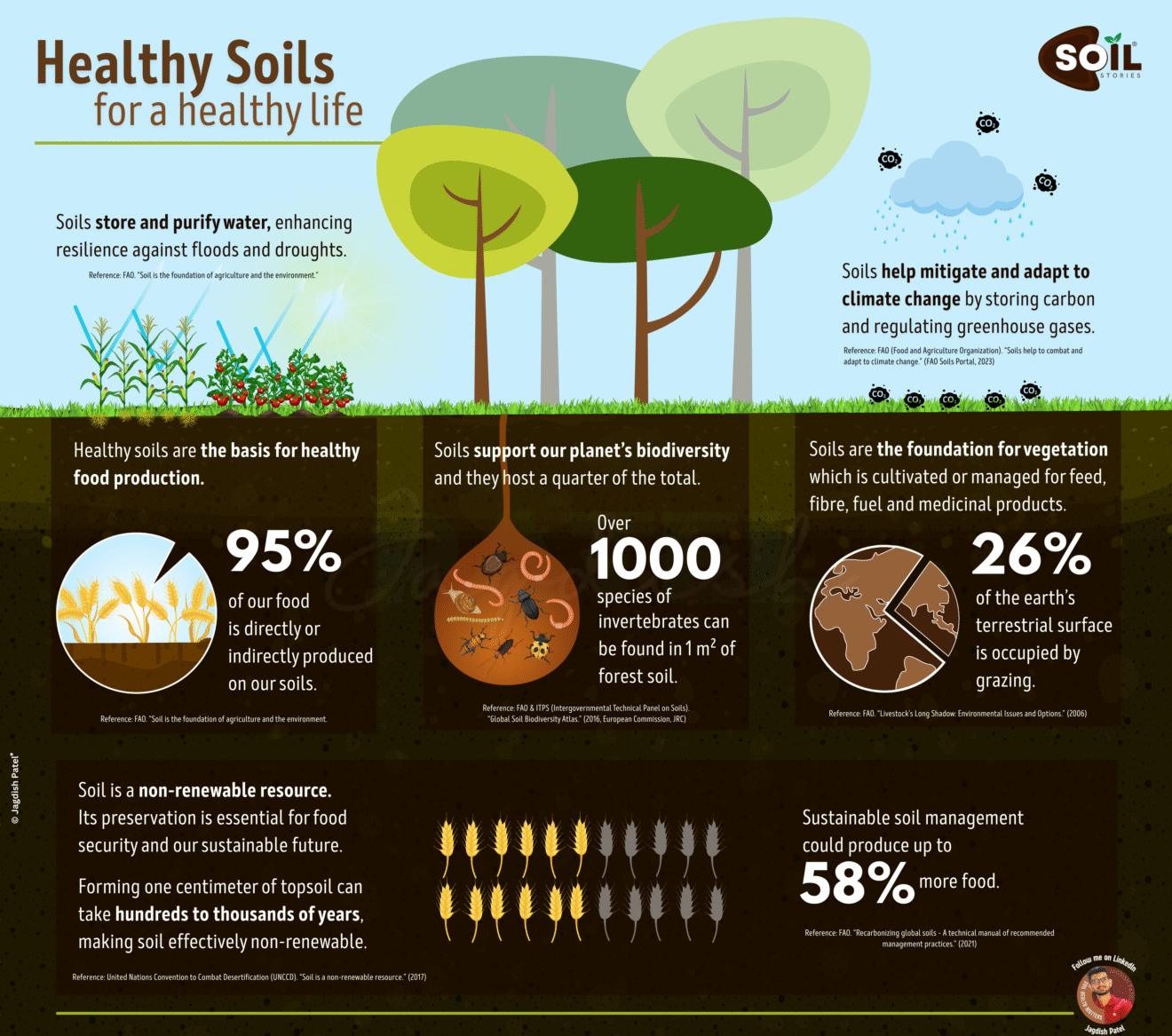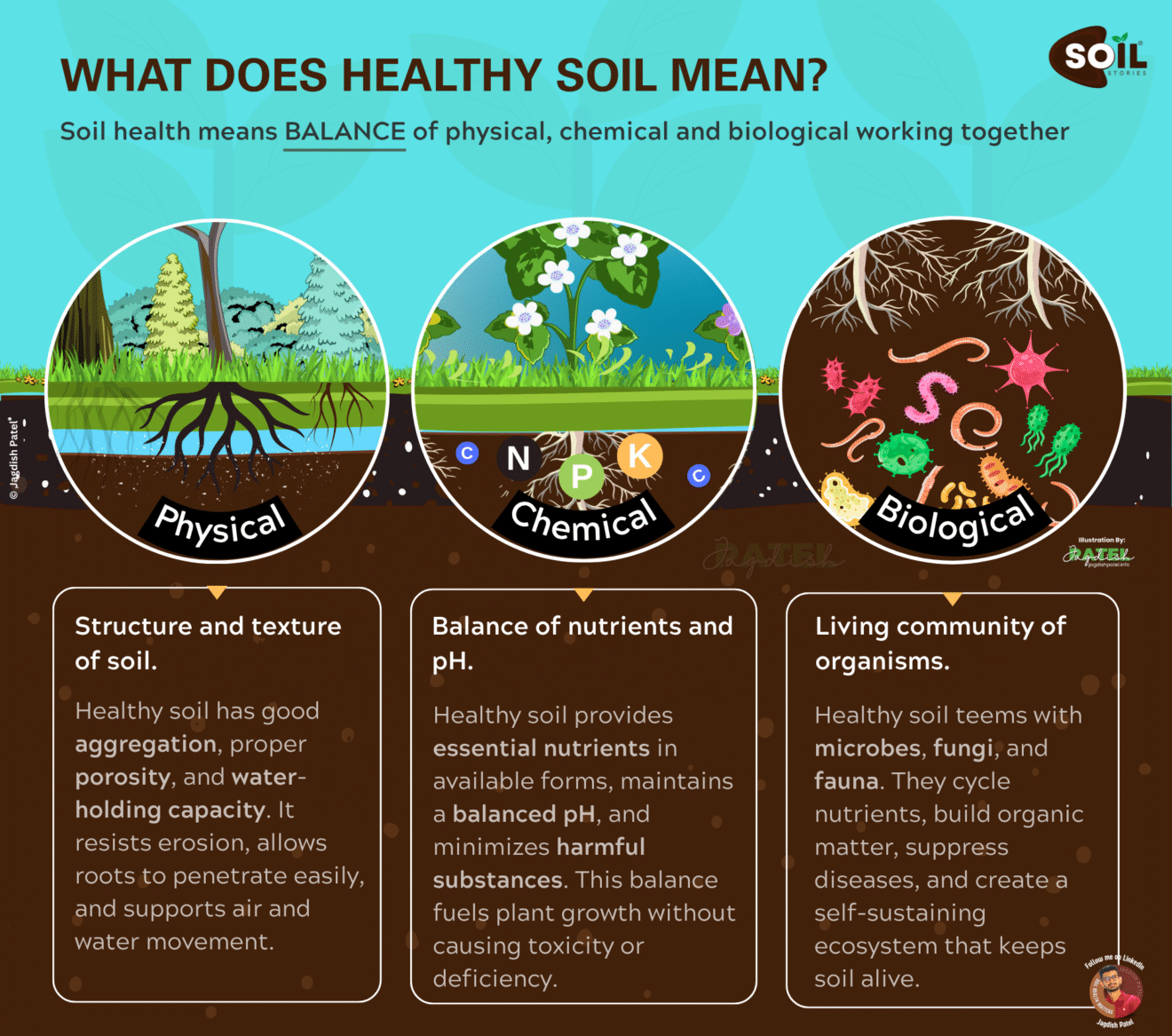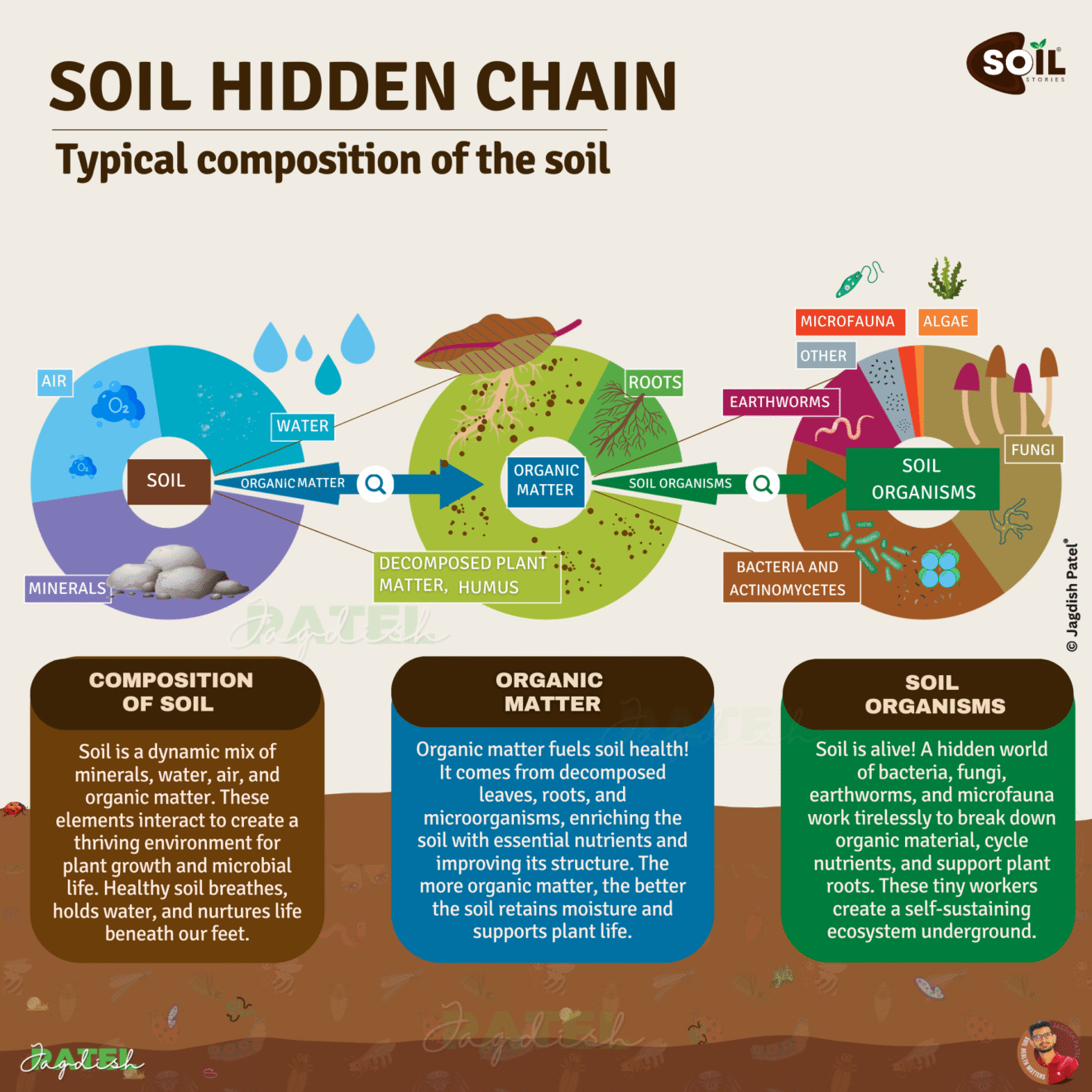In agriculture and environmental science, soil is often viewed as a static resource, simply a medium that holds plants upright. But in reality, soil is a living, breathing ecosystem, and its relationship with plants forms one of the most powerful natural partnerships on Earth. This dynamic collaboration is known as plant–soil synergy, where biological, chemical, and physical processes work together to support healthy crops, resilient ecosystems, and sustainable farming practices.
As a Soil Scientist and Visual Communicator, I’ve spent years studying how these hidden processes operate beneath our feet and how they can be harnessed to build a more sustainable future. I believe we must shift from treating soil as an inert substance to respecting it as a living partner in our agricultural systems.
What Is Plant–Soil Synergy?
Plant–soil synergy refers to the interconnected processes between plants and the soil environment. From fallen leaves to living roots, plants interact with soil organisms and influence everything from nutrient cycling to soil structure. These interactions are not isolated. They form a complex network where microbes, decomposers, plant roots, and even pests play interdependent roles.
Let’s explore how this synergy works across three key domains: biological, chemical, and physical.

1. Biological Interactions: Life Beneath the Surface
At the heart of the plant–soil system is a bustling biological network. Here’s how different living organisms contribute:
Leaf Litter and Organic Debris: When plants shed leaves and roots, they contribute organic matter to the soil, kickstarting the nutrient cycle.
Decomposers like fungi and bacteria break down this matter, releasing nutrients essential for plant growth.
Microbial Grazers such as protozoa and nematodes regulate microbial populations, ensuring diversity and improving nutrient turnover.
Predators help maintain balance by controlling grazers and preventing microbial overgrowth.
Microbial Symbionts such as mycorrhizal fungi form partnerships with plant roots, enhancing water and nutrient uptake while improving plant resilience.
Pests and Pathogens, though often seen as harmful, are part of this ecosystem and can trigger systemic plant defenses and diversify microbial responses.
In my research and field observations, I have seen firsthand how microbial diversity and predator-prey balances influence plant health and resilience to climate stress.
2. Chemical Processes: Fueling Plant Growth
Soil chemistry governs the availability and movement of nutrients, which are vital for healthy plant growth.
As decomposers work, they release nitrogen (N), phosphorus (P), and potassium (K) into plant-available forms.
Microbial activity, stimulated by root exudates, mobilizes nutrients locked in organic and mineral forms.
These nutrients are absorbed by plant roots, fueling biomass production and contributing to the next organic matter cycle.
I often emphasize that soil fertility is not just about adding fertilizers, but about enabling nutrient cycling through biological activity and organic inputs.
3. Physical Structure: The Foundation of Growth
Healthy soil must also possess the physical characteristics that support plant roots and microbial life.
Soil structure, shaped by root growth, microbial glues, and organic matter, determines how air and water move through the soil.
Good structure enhances infiltration, aeration, and root penetration, which is critical for crop performance in both drought and flood conditions.
Plant roots influence soil aggregation and stability through their architecture and secretions.
In both lab experiments and fieldwork, I have observed how neglecting structure can limit yields even in nutrient-rich soils.
Why Does This Synergy Matter?
When we understand and encourage plant–soil synergy, we unlock multiple benefits:
Improved soil organic matter and carbon storage
Better drought tolerance and water use efficiency
Natural pest and disease regulation
Enhanced ecosystem resilience and productivity
In my professional opinion, this is the foundation of what I call wise agriculture. It is an approach where we work with nature, not against it. This goes beyond trends like regenerative farming and focuses on restoring the function of the soil.
Final Thought: Soil Is Alive
The soil beneath us is not dead. It is full of life, intelligence, and opportunity. Every interaction, from leaf litter to microbial symbiosis, plays a role in building healthy soils and healthy crops.
Let’s treat soil not as a passive resource, but as a partner in our survival. The future of farming lies not just in what we grow, but in how we grow it with respect for the living systems that support us.
Sources and Further Reading
This article is based on scientific insights from soil ecology, microbiology, and sustainable farming practices. The interpretations and visual storytelling are provided by Jagdish Patel, Soil Scientist and Visual Communicator.
For more insights on soil health, microbial interactions, and sustainable agriculture, visit:
🔗 www.jagdishpatel.info — Explore my latest scientific illustrations and articles
📚 Read other blogs — Dive into topics like biochar, nutrient cycles, and wise agriculture




